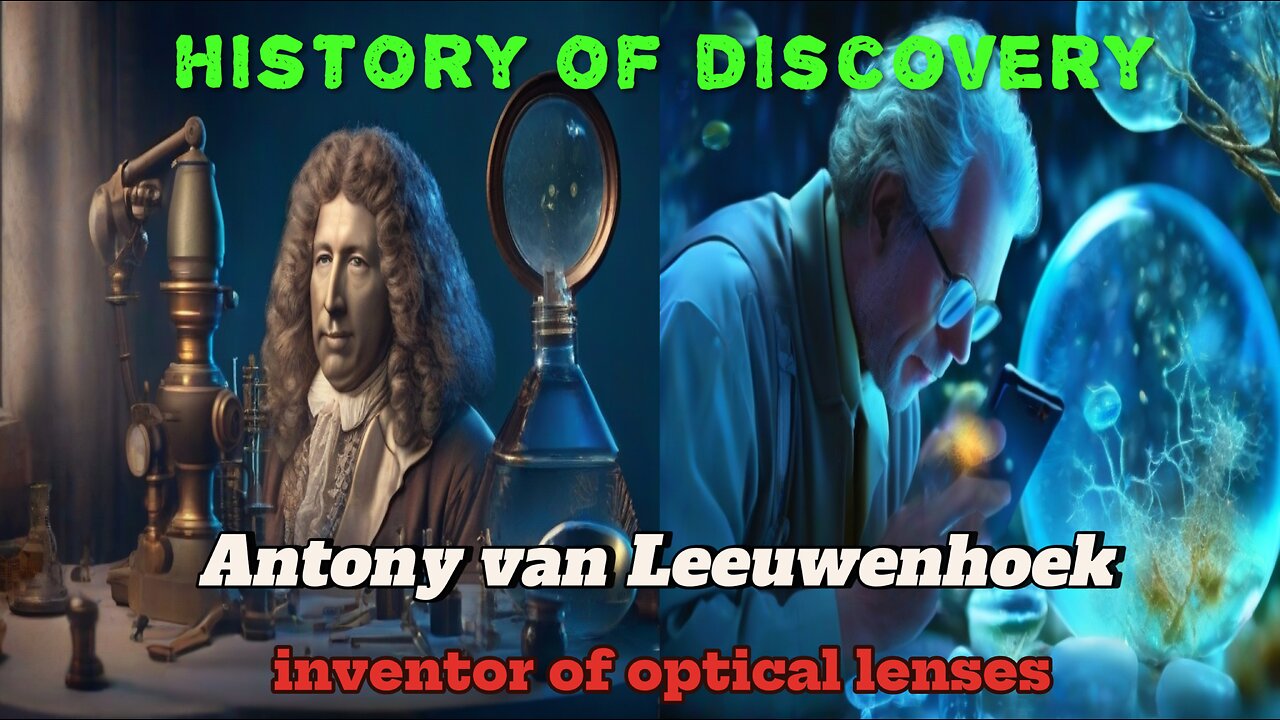Premium Only Content

How Antony van Leeuwenhoek Made His Tiny Lenses and Discovered a New World of Microbes
In this video, we will see how Antony van Leeuwenhoek, a Dutch scientist known as the father of microbiology, made his tiny lens and discovered a whole new world of microbes invisible to the naked eye. #Leeuwenhoek #Microscope #Microbiology
Leeuwenhoek made a simple microscope consisting of a single high-quality lens with a very short focal distance. He was the first person to observe bacteria, protozoa, and sperm cells using his microscope. His research refuted the doctrine of spontaneous generation and laid the foundations of bacteriology and protozoology.
Leeuwenhoek made his lenses by sharpening glass until it was thin and perforating it with a needle. Other lenses he made by melting glass and using small, very hot droplets that he shaped into almost spherical balls as they cooled. This method was described in 1678 by the influential English microscopist Robert Hooke, who inspired other scientists to do the same.
Leeuwenhoek observed a wide variety of small objects with his microscope, such as the structure of eye lenses, muscles, insect mouthparts, and the fine structure of plants. He also discovered parthenogenesis in aphids. However, his greatest discovery was the microbes he isolated from various sources, such as rainwater, pond and well water, and human mouths and intestines. He also measured their size.
Leeuwenhoek reported his discoveries to the Royal Society of London, a prestigious scientific organization that published the journal Philosophical Transactions. Although Leeuwenhoek had no academic background and did not speak Latin, the scientific language of the time, the Royal Society recognized his contributions and made him a member in 1680.
Leeuwenhoek died in 1723, at the age of 90. He left behind more than 500 lenses and about 200 microscopes, most of which were made of silver or brass. He also left detailed notes about his research, which became a valuable resource for scientists of the time. Leeuwenhoek is considered one of the pioneers of microscopy and microbiology, and his legacy lives on today.
-
 LIVE
LIVE
The Mel K Show
41 minutes agoMORNINGS WITH MEL K - The Season Of Treason: America’s Future On the Ropes 8-22-25
359 watching -
 LIVE
LIVE
JuicyJohns
3 hours ago $0.29 earned🟢#1 REBIRTH PLAYER 10.2+ KD🟢
163 watching -
 LIVE
LIVE
Rethinking the Dollar
21 minutes agoPowell Caves: The MAGA Wealth Effect Begins NOW! | Morning Check-In: Let's Talk...
68 watching -
 LIVE
LIVE
The Shannon Joy Show
16 hours ago🔥🔥 Shannon Joy’s Week in Review: August 22, 2025 🔥🔥
462 watching -
 LIVE
LIVE
Trumpet Daily
15 minutes agoTrumpet Daily LIVE | Aug. 22, 2025
166 watching -
 1:01:21
1:01:21
VINCE
3 hours agoThe FBI Is Putting The Deep State On Notice | Episode 109 - 08/22/25
121K120 -
 12:39
12:39
Nikko Ortiz
1 hour agoLive - News, Politics, Podcast And Naaah Im Playin We Chillen
7.53K1 -
 LIVE
LIVE
LFA TV
8 hours agoLFA TV ALL DAY STREAM - FRIDAY 8/22/25
6,173 watching -
 LIVE
LIVE
Caleb Hammer
1 hour agoGirl Math Final Boss | Financial Audit
108 watching -
 LIVE
LIVE
The Big Mig™
3 hours agoTrump, Are You Tired Of Winning
4,443 watching